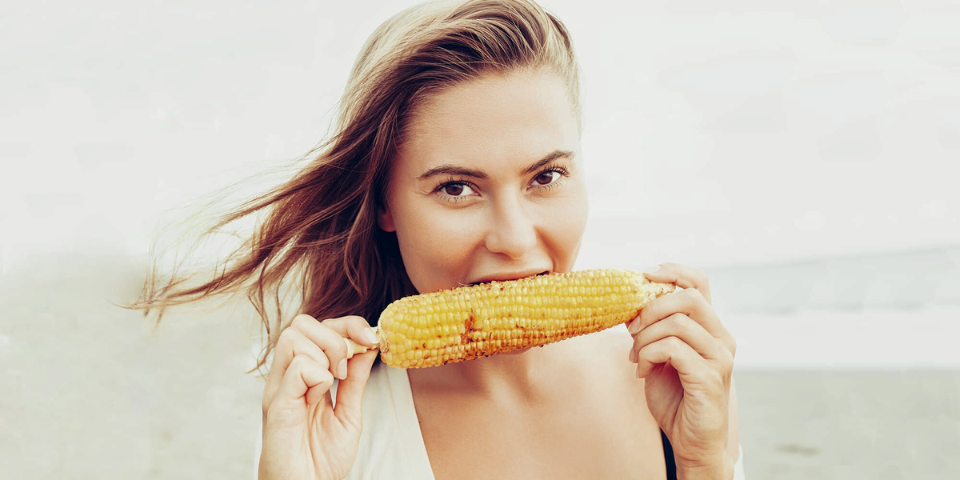When most people think of plant-based protein, they think of vegan protein powders, nuts, beans, and quinoa. But did you know there are a number of other protein-rich vegetables that you may not have considered?
Whether you’re a vegan trying to get enough protein or you’re focusing on protein to maximize your fitness gains, adding protein-rich vegetables to your meals can be really helpful in reaching your goals.
Here is a list of seven high-protein vegetables that may surprise you.
1. Lentils
Protein: 18g per cup, cooked
Lentils are among the richest plant-based sources of protein and are an excellent source of iron. Eat them with sautéed onions, tomatoes, or other vitamin C sources to help your body absorb the iron better.
Cooking Tip: Use lentils as a simple substitute to replace half the meat in this easy turkey chili.
2. Edamame
Protein: 18g per cup, shelled, cooked
Edamame is a popular appetizer in Japanese cuisine, consisting of soybeans that contain more protein than almost any whole vegetable. It is also an excellent source of fiber to help you feel full and control your blood sugar.
Cooking Tip: Enjoy steamed edamame as a snack with some sea salt or add edamame beans to a teriyaki chicken stir-fry for an extra protein boost.
3. Green Peas
Protein: 9g per cup, cooked
Green peas are not only a classic side dish but also a good source of protein, magnesium, B vitamins, and rich in vitamin A. They also provide some calcium and beta-carotene, an antioxidant form of beta-carotene.
Cooking Tip: Add steamed green peas to your favorite whole grain or bean-based pasta with fresh pesto sauce.
4. Cooked Spinach
Protein: 5g per cup, cooked
Popeye made spinach a famous health food for good reason. Cooked spinach is a good source of protein and also rich in iron, calcium, vitamin A, and folic acid.
Cooking Tip: Add some spinach to your next green smoothie, game day appetizer, or muffins (trust us, you’ll love them).
5. Yellow Corn
Protein: 5g per cup, cooked
There’s nothing quite like fresh sweet corn in the summer. In addition to some protein, corn also provides starch and fiber, making it a great choice for the carbohydrate option on your plate. Corn also provides some potassium, phosphorus, niacin, and magnesium.
Cooking Tip: If you get fresh sweet corn, cook the cobs for 10 minutes, cut off the kernels, and toss them with olive oil, salt, and pepper. If corn is not in season, you can still prepare it with frozen sweet corn.
6. Red Potatoes
Protein: 5g per medium baked potato
Regular potatoes have fallen out of favor in recent years, but did you know they contain fiber like sweet potatoes along with other nutrients like potassium, vitamin C, and iron? They are a great option for the carbohydrate source in your meal.
Cooking Tip: Enjoy your mashed potatoes in a protein-rich way with this recipe for mashed potatoes with Greek yogurt and green onions.
7. Artichoke
Protein: 4g per medium artichoke, raw
Artichokes are quite large, and despite the small amount of delicious flesh obtained from the leaves, they contain more protein than most other vegetables. They also contain potassium, magnesium, and vitamin C.
Try it: Steam a whole artichoke for 20-25 minutes and enjoy dipping the leaves in this healthier hollandaise sauce.
The Importance of Diversifying Plant Protein Sources
For those who do not consume animal products, consuming various types of protein from different sources is crucial. Protein is made up of 20 amino acids, nine of which are not synthesized by the body and therefore must come from food. Animal protein – eggs, fish, poultry, dairy, meat – contains all nine of these essential amino acids and is thus a complete protein.
Plant proteins, however, are typically incomplete. So, if you follow a strict vegan diet, it is important to consider the quality of the protein you consume and combine foods accordingly.
Vegetarian diets can be much more flexible in terms of protein sources compared to vegan diets. For example, eggs and dairy products are protein-rich foods with high biological value (i.e., easily absorbed and utilized by the body) and are vegetarian lacto-ovo foods. Regularly incorporating eggs or dairy products in addition to protein-rich plant foods like beans and lentils can help ensure you are getting enough essential amino acids.
A vegetarian scrambled egg for breakfast could contain a hefty 26 grams of protein along with all the essential amino acids your body needs. All it takes are the following ingredients:








